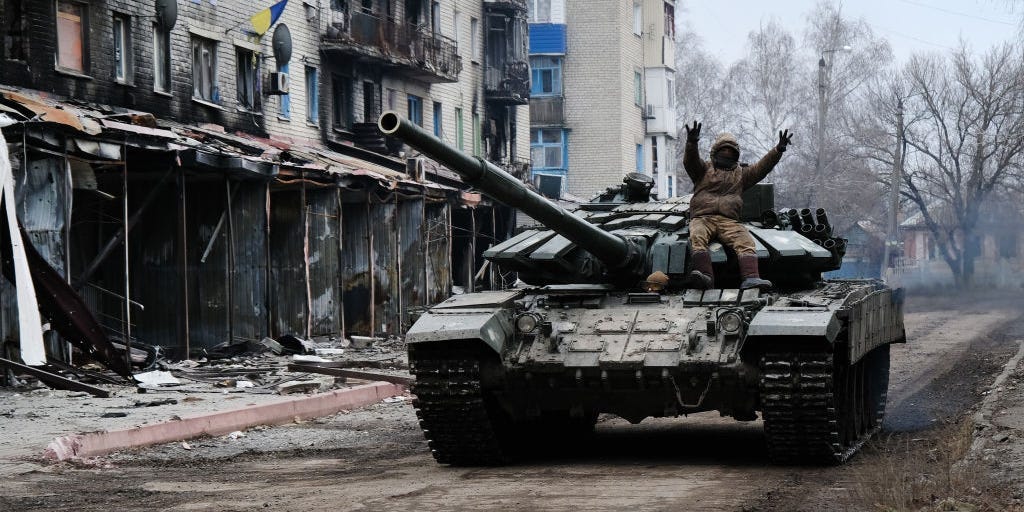Drones are turning tanks and armored vehicles into burning wrecks in Ukraine, but NATO allies are doubling down on the heavy weapons.
In footage from the war, cheap FPV quadcopters buzz into the open hatches of tanks and violently explode. Shattered hulks are seen scattered along roads and across scarred fields. Open-source trackers and think tanks estimate that thousands of vehicles have been lost, with many destroyed by drones.
Amid the slaughter, NATO is still ready to bet big on armored vehicles. Many militaries are investing in tanks, sometimes for the first time in their histories, and new companies are making new models as Europe gears up for the possibility of expanded Russian aggression.
Betting on tanks for the next war
Around half a dozen NATO allies announced new tank purchases this year, with Sweden and the Czech Republic each buying 44 German-made Leopard 2A8 main battle tanks, the Netherlands buying 46, and Croatia buying as many as 50. Additionally, Poland said that it was buying 180 South Korean K2 Black Panthers.
Lithuania, a NATO ally bordering Russia, is buying tanks for the first time ever. Vaidotas Urbelis, the defense ministry’s policy director, told Business Insider last year that the decision was made in response to the Ukraine war.
The German military is betting on its own tanks as well, deploying Leopard 2A8s with its new brigade in Lithuania, the first major permanent German brigade stationed abroad since World War II. The brigade commander told BI the war demonstrated that tanks would be key to shielding NATO.
The 2A8 is KNDS Deutschland’s most advanced Leopard tank, with modifications based on lessons from Ukraine, like drone protection.
And in related industry news, major European defense firms Leonardo and Rheinmetall announced a 50/50 venture last year to develop and produce tanks and armored vehicles, while Germany’s RENK announced a $585 million investment this year in armored vehicle production capacity. And Lithuanian company Aurida Engineering has made the country’s first domestically built MRAP armored vehicle, though it’s only a prototype.
There are also a dozen European countries actively developing a new next-generation main battle tank for future fights — the Main Armored Tank of Europe. The US and Europe have long known armored warfare, both in theory and in brutal practice, and there are still heavy investments in that for fights to come.
Tanks are struggling
In Middle Eastern conflicts where the US and its allies enjoyed air superiority, tanks played decisive roles, spearheading dramatic advances like the “Thunder Run” into Baghdad in 2003 or overwhelming enemy armor in set-piece battles, such as the tank clashes of the 1991 Gulf War.
The same hasn’t been seen in Ukraine.
This war has turned into a grinding fight with largely static front lines and both sides building defensive positions like trenches, fixed concrete barriers, and minefields, all with drones swarming overhead. That’s not where tanks excel.
Col. Hamish de Bretton-Gordon, a former British Army officer who served with a tank regiment, told Business Insider that this has blunted their effectiveness, as mobility “really is their most useful thing. Always has been.”
Ukraine’s last major effort to employ tanks was in its 2023 counteroffensive, when it tried to use new Western tanks in large armored assaults but instead saw heavy losses in the face of prepared defenses Moscow’s forces were given time to set up in depth amid delayed Western support. Russia has continued to try its luck at mechanized assaults, but it hasn’t seen tremendous success.
The drone problem has only made the battlespace more challenging for vehicle operations, and both sides are now more cautious in employing them. They operate further back in concealed positions or as mobile artillery. Sometimes, they’re used in small numbers for carefully timed assaults with the support of drones, electronic warfare, and other vehicles, but they’re not out spearheading huge breakthrough efforts.
Early on in the drone war, before they pulled back, “an awful lot of tanks were being taken out relatively easily by FPV drones and it seemed pretty incongruous that a $500 drone was destroying a $5 million tank,” de Bretton-Gordon said.
Tanks, often with the least amount of armor on top, were not designed with threats from above front of mind, especially not small exploding drones.
Scott Boston, a land warfare expert at RAND, told Business Insider that “both sides are keeping them withheld beyond a fairly significant distance from the line of contact because they don’t want to risk them.” Both sides have also been adding armor to them to make them more resilient should they face drones in battle.
The tank isn’t dead yet
NATO is watching the Ukraine war closely, drawing lessons where it can, but its focus is readying for the next war, a fight that, considering the capabilities potentially involved, could look different from the war being fought today.
“Everybody prepares for the last war and is never ready for the next war,” Jeffrey Edmonds, a Russia analyst at the Center for Naval Analyses and former US Army armor officer, told Business Insider. “It would be a mistake to think that the next war is going to look just like Ukraine.”
A Russian war against NATO might not look like the war against Ukraine.
“There is absolutely an argument to be made that what’s happening in Ukraine is really sort of distinctly driven by the conditions of the Ukraine war,” Boston said.
The landscape is very different, the front lines might not look the same, and, perhaps most importantly, the weapons in such a war may be very different. NATO has significantly more firepower than Ukraine, which might prevent the war from ever devolving into a grinding, attritional drone war in the first place.
The alliance’s capabilities are “far in advance of Ukraine and far in advance of Russia,” including gear like F-35 stealth fighters, de Bretton-Gordon said.
Though still difficult, as threats to air assets multiply, NATO could theoretically provide the air cover needed to employ tanks effectively and in much larger numbers than Ukraine.
The West is also upgrading tanks with the drone threat in mind and developing a raft of counter-drone systems.
“There’s still a role for a tank,” Edmonds said. “Tanks provide shock effect, long-range fire. If you can mitigate some of the drone impact and you can maintain a fluid battle, then I think they clearly still have a role to play.”
The US Army secretary has said the same, saying that predictions on the death of the tank may be off. Instead, that capability might simply be used differently, with tanks hanging back. And experts say tanks are going to be necessary for capturing ground.
“You can’t actually achieve your aims, almost ever, without some kind of ability to either attack or counterattack or retake ground,” Boston explained. You can’t win a war on the defensive, and to attack, you want gear like tanks. De Bretton-Gordon said that “firepower mobility and protection are still fundamental on the battlefield,” and for now, NATO’s still betting on tanks.
Read the full article here
















